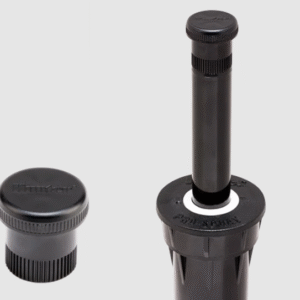Introduction
A well-lit backyard can transform your outdoor space into a cozy, inviting, and safe extension of your home. Whether you want ambiance for evening gatherings, accent lighting for garden features, or security lighting around walkways, choosing the right outdoor lights is essential.
In this guide, we’ll walk you through everything you need — from product types and key technical specs to installation tips and design ideas — based on the offerings and insights from The LED Light Hub.
Why Choose LED Lighting for Your Backyard?
Before diving into styles and layouts, it helps to understand why LED lighting has become the go-to choice for outdoor illumination.
- Energy Efficiency & Longevity: LEDs consume much less power compared to traditional incandescent or halogen bulbs. You’ll notice lower electricity costs and less frequent bulb changes.
- Versatility of Options: At The LED Light Hub, you’ll find a broad selection of LED strip lights (static white, color changing RGB, dynamic tunable white) and outdoor-rated fixtures (e.g. IP65 outdoor strips).
- Durability & Weather Resistance: Outdoor lights must endure the elements—rain, heat, cold. That’s why LED fixtures with outdoor or waterproof ratings (for example, IP65) are available at The LED Light Hub.
- Design Flexibility: LED strip systems can run along pergolas, under railings, or even inside architectural elements. The LED Light Hub’s catalog includes specialized series for different design needs (e.g. Accent, Architectural, Industrial, etc.).
Because of these benefits, LED solutions are ideal for effortlessly brightening your backyard while keeping running costs and maintenance low.
Types of Outdoor LED Lighting & Where to Use Them
A thoughtfully lit backyard often combines several types of fixtures. Below are common categories and suggestions for their use.
1. LED Strip Lights (Outdoor / IP65 Rated)
The LED Light Hub offers LED strip lights that are rated for outdoor use (IP65). These flexible strips are perfect for installing under eaves, along decks, under benches, or inside planters to provide ambient glow without harsh glare.
2. Accent & Architectural Lighting
These are fixtures meant to highlight walls, columns, or garden features. You might use spotlights, uplights, or wall-wash fixtures to accentuate texture, foliage, or statues.
3. Color-Changing & RGB Strips
For a more dynamic look (for e.g. party nights or seasonal decoration), color-changing RGB LED strips are available. These let you shift moods from warm and cozy to lively and vibrant.
4. Dynamic Tunable White Strips
These strips allow you to adjust the white light between warm and cool tones, giving you control of ambiance. The LED Light Hub sells “Dynamic Tunable White” series for this purpose.
5. Outdoor Fixtures: Spotlights, Floodlights, Water Lights
While the hub focuses heavily on strip and architectural lighting, they also offer related categories like spotlights and water lights for garden ponds or fountains.
By mixing ambient strip lighting, accent lighting, and feature lighting, you can create a layered and cohesive illumination scheme.
Key Factors to Consider When Choosing Outdoor Lights
When selecting outdoor lights for your backyard, make sure to account for the following:
1. Ingress Protection (IP) Rating
Any outdoor light should be rated to resist dust and moisture. A commonly recommended standard is IP65 or higher — meaning protection against low-pressure water jets and dust ingress.
2. Brightness (Lumens) & Beam Angle
Choose lumens based on the area to light. Use narrower beam angles (spot) for highlighting features, and wider angles (flood) for general illumination.
3. Color Temperature (Kelvin)
- Warm white (about 2700–3000 K) gives a cozy, inviting feel.
- Cool white (4000 K and above) offers a more modern, crisp appearance.
With tunable white strips, you have flexibility to shift tone based on function or time of day.
4. Power & Voltage Compatibility
Check if your selected fixture matches your power source (e.g. low-voltage LED systems, or line-voltage). Also ensure your transformer or driver can support the total wattage of all connected lights.
5. Installation Considerations
Think through wiring, mounting surfaces, and the route of cables. Hidden wiring and tidy connections contribute to a clean finished look. Use appropriate brackets, conduits, or clips for long-term durability.
6. Warranty, Returns & Support
The LED Light Hub offers returns within 30 days (customer covers return shipping) if unused and undamaged. They also inspect items upon return before refunding. If a shipped item arrives damaged, they ask for photos and will send a replacement. Lastly, the hub advertises they will beat a competitor’s price for the same item.
These policies can add confidence when ordering parts or kits.
Designing Your Backyard Lighting Layout
To make a backyard lighting scheme that’s both functional and beautiful, follow these design steps:
1. Define the Purpose of Each Area
- Pathways and steps: for safety and guidance
- Patio or seating zones: ambient lighting, subtle glow
- Garden beds, trees, shrubs: accent and uplighting
- Walls, architecture, fences: wash lighting
- Features (fountain, sculpture, pond): focal lighting
2. Layer Your Lighting
Use a mix of ambient, accent, and task lighting rather than relying on one type. Layering adds depth and visual interest.
3. Use Focal Points
Pick a few features you want to highlight (a tree, architectural detail, sculpture). Direct light subtly toward them, not everywhere.
4. Control & Automation
Incorporate motion sensors, timers, or smart controls so lights turn on/off automatically. This reduces energy use and prolongs fixture life.
5. Trial & Adjust Angles
Once installed, test lighting effects at night. Move angle or trim obstructions to avoid glare, coverage overlaps, or dark spots.
Installation Tips & Best Practices
Even with great gear, a good installation makes all the difference. Here are practical tips influenced by general LED outdoor advice (adapted to the context of The LED Light Hub’s products):
- Always turn off power before working on circuits
- Use insulated tools and check wiring paths
- Mount securely — ensure brackets or fixtures are stable
- Use junction boxes or waterproof connectors where wires connect
- Bury or shield exposed cables to protect from UV and moisture
- Adjust aim carefully — avoid shining lights into windows or neighbors’ yards
- Test individual fixtures before finalizing connections
If you encounter flickering, double-check connections and wire integrity. If problems persist, consult a licensed electrician.
Examples of Lighting Applications
Here are a few illustrative applications using LED solutions from The LED Light Hub:
- Under-rail strip lighting: Run IP65-rated LED strips under deck rails to softly outline bounds
- Uplighting trees or shrubs: Use spot-type fixtures to illuminate vegetation from below
- Wall-wash accents: Apply architectural or accent series strips to gently wash textures on a patio wall
- Color washes for events: Switch to RGB or tunable white to transform the mood during gatherings
- Edge lighting on steps: Embed strips or linear fixtures into stair risers to improve safety
Each idea gives your backyard visual dimension while combining function and style.
Maintenance & Longevity Tips
To keep your outdoor lighting system performing well over time:
- Wipe down fixtures periodically to remove dust, pollen, or grime
- Check for cracks or damage after storms
- Inspect seals and gaskets to preserve waterproofing
- Ensure all connections remain tight
- Update firmware or control settings for smart systems
- Replace any failed LED modules promptly to avoid dragging current through bad segments
With routine care, LED systems can last many years, making the investment worthwhile.




